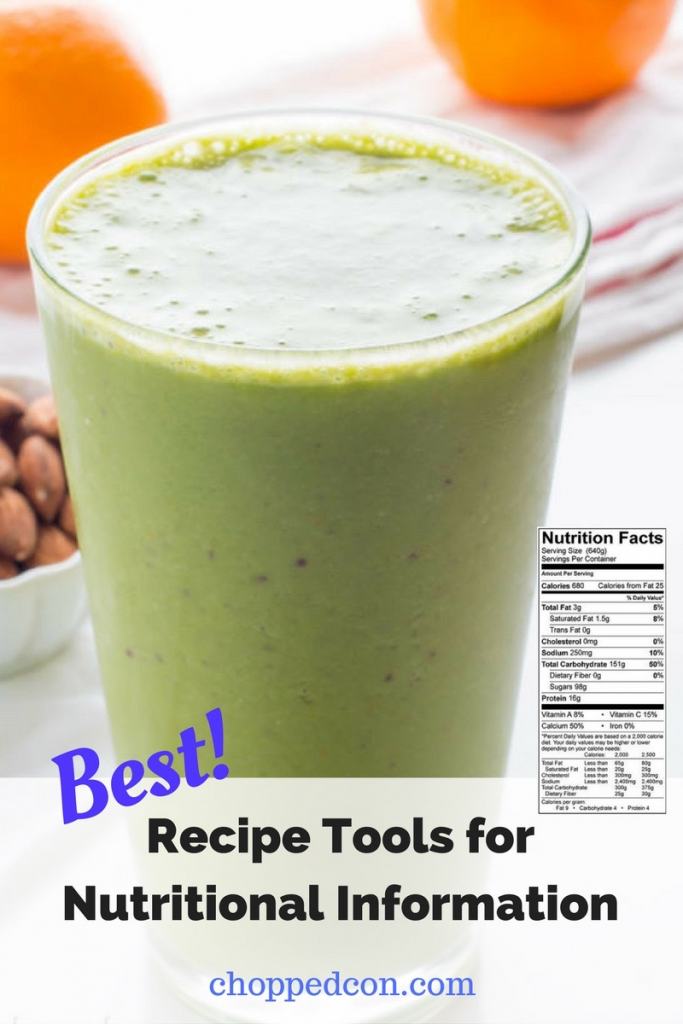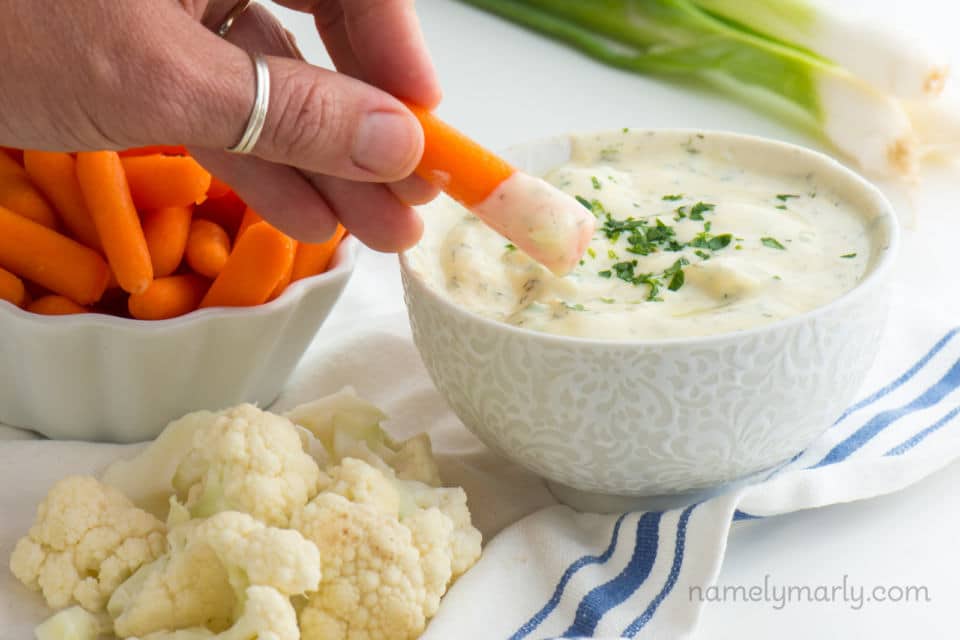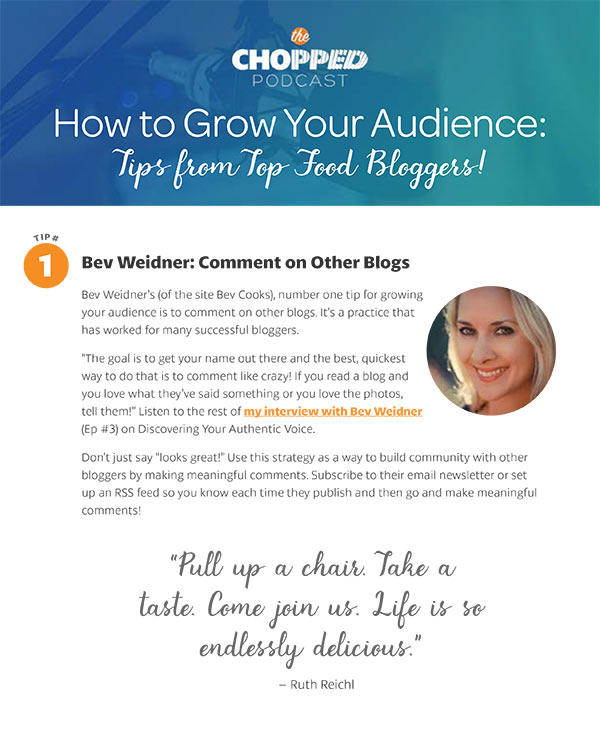Bloggers who showcase healthy recipes on their site oftentimes include nutritional information for their recipes too. If that’s you and you’re looking for ways to make that happen, you will love today’s post sharing Nutritional Information Recipes Tools. These tools can help you display and/or input nutritional information into your recipes to help your health-conscious readers. Do you love food blogger business tips? If so, be sure to read my post on Food Blogger Revenue Guide. And you’ll find a lot of juicy goodness in this post on Recipe Development with Gaby Dalkin.

Pros and Cons of Nutritional Information Recipes Tools
There are a lot of reasons food bloggers want to include nutritional information in their recipes. Here are some of the pros/cons of including nutritional information in your recipes:
- It’s great information for readers who are trying to be health conscious about the food they prepare and eat
- Nutritional information trackers are not always accurate. First, a database is only as good as the information programmed into the back end. Second, a database is only as good as the information the user selects. You can see that’s two opportunities for user error. Imagine you have a recipe that calls for 1 oz of almonds. If you’re in the database and you put in 1/4 cup, that may not amount to 1 oz. As a result, your nutritional information will not be accurate. In addition, nutrition is a science which means it’s evolving. For example, a study a few years ago showed almonds have fewer calories. That’s significant!
- Nutritional information on a recipe can lead people to get consumed with the numbers. Is that a good thing? The jury is still out. Some experts say it is good to track calories. Others say it’s better to teach people to listen to their bodies. It’s a more mindful eating approach. So, that means this step may or may not actually be leading to making people healthier.
- Obesity is an epidemic in the United States. As a result, a lot of restaurants across the country are being required to provide nutritional information. If studies have shown improved health from including nutritional information at restaurants it seems the same could be true for blogs. It adds incentive to help your readers be as healthy as possible.
- If you use a lot of specialty ingredients, you may not find them in some recipe databases. I recommend looking at each of these below and searching for some of your more frequently used ingredients. That vegan cheese that you love to include in your recipes? Will you find it in that database? If not, does it allow you to add an ingredient? These kinds of questions can help you determine which of the tools below is the best one for you.
- It takes additional time to add nutritional information for your recipes. Let’s assume you have a fairly accurate account of your ingredients used in the recipe. The next step will be to look up those ingredients in whatever tool you’re using (see below). Next you’ll need to determine the portions. Finally, you’ll need to enter the nutritional information into your recipe. Even when you have the recipe done, it may not actually be done. Have you ever gone back to an old recipe and changed an ingredient? If you do that, you’ll need to change the nutritional information as well. With all the other work involved with being a blogger, adding nutritional information quickly becomes optional.
- However, displaying nutritional information indexed in your recipe has some solid pros. For example, it can help your site show additional information in Google Search Results. Try a few searches and see for yourself. See how the nutritional information, when it’s included in a recipe, is displayed? It can be the thing that causes someone to click on your recipe over another.
- When you provide nutritional information, your recipe may be featured by health-conscious sites, magazines, and apps.
Obviously you have a lot to think about when deciding whether to display nutritional information on your recipes. It may be worth the added effort if it’s something you think your readers will want. You may also like the idea of distinguishing your blog in the food blogging recipe arena. It’s our hope that these Nutritional Information Recipes Tools can help.

Best Nutritional Information Recipes Tools
Want to include more nutritional information in your recipes? You’re in luck because there are several Nutritional Information Recipes Tools available. I recommend looking through each of these to see which one meets your needs. Here are some nutritional information recipe tools that we’re aware of:
My Fitness Pal. Individuals can us this app to track your personal day-to-day calories, water consumption, fitness, macro and micro nutrients, and more. In addition, food bloggers use it to generate nutritional information for your recipes. It’s a fairly easy tool to use and displays fairly comprehensive information.
USDA’s SuperTracker. The USDA has created SuperTracker to create nutritional information for recipes. You can create a login to save recipes as well. This is a “just-the-facts-ma’am” kind of site, but if that’s what you’re into, it will work great. If you want quality outcomes, you need quality inputs. Basically, what that means is be sure to track your ingredients precisely as you’re preparing your recipes. That’s the way you can ensure that you’re inputting high quality information into the database.
Spark Recipes. If you want to display nutritional information about your recipes, this Spark Recipe tool will may be just what you’re looking for. Simply add the ingredients to your recipes, indicate the number of servings and you’re ready to go.
Self Magazine Nutrition Data. You can use the Self Magazine Nutrition Data tool to generate nutritional information about your recipes.
Recipe Nutrition. Here’s another site that provides a tool for calculating nutritional information for your recipes. You must log in at Recipe Nutrition, but it appears to be free and relatively easy to use.
Cron-O-Meter. This is a tool I’ve seen recommended by other bloggers. It’s free to use and provides nutritional information for recipes. Simply sign up for a Cron-O-Meter account, click on the FOOD tab at the top and click on Your Custom Recipes on the left. Follow the prompts from there. This tool provides some very thorough nutritional information.
Recipal. There is a free trial period of 3 recipes to use this tool. Otherwise you pay $19 for 3 recipes of $49 per month for single users and unlimited recipes. Head over to Recipal for more information and to determine if this is the right tool for you.
Recipe Builder Pro. This is a $2.99 app which seems to have fairly decent reviews, especially the latest update. I can see the advantages to having an app like Recipe Builder Pro, because you can build the nutritional information as you’re preparing the recipe in the kitchen.
Tufts Recipe Spreadsheet. If you know me, I have a thing for a beautiful spreadsheet and the folks at Tufts have put together this Recipe Spreadsheet to help people, including you, track and prepare nutritional information for recipes. Obviously a spreadsheet should provide you a little more flexibility when it comes to specialty ingredients and other customization of your recipes.
Nutritional Information Summary
In summary, if you’re providing nutritional information about your recipes, these Nutritional Information Recipes Tools should help. There’s a lot of work involved with being a blogger, but understanding the services you want to provide to your readers and then researching to find the right tools that work for you and your audience is the way to go about it.
If you have experience with any of these you’d like to share or if you have others you’ve used, please leave a comment below.
 Ready to Grow Your Audience?
Ready to Grow Your Audience?